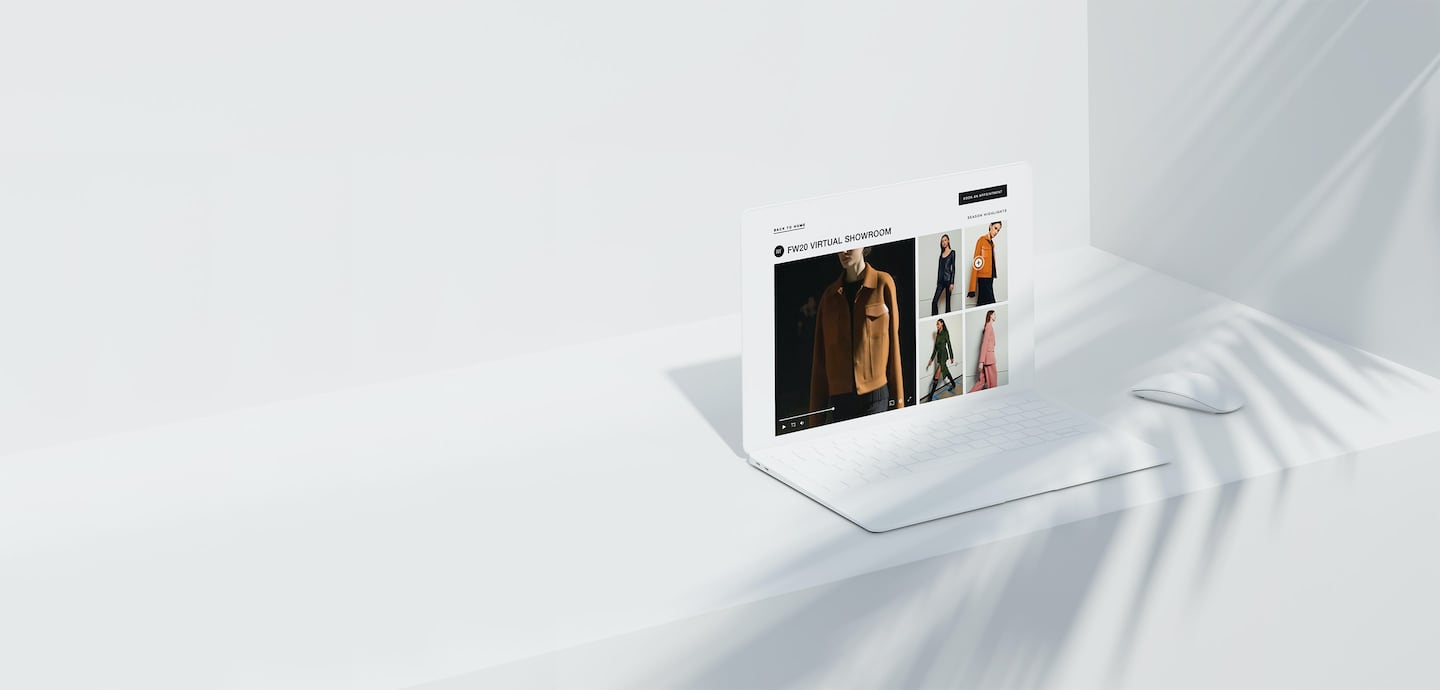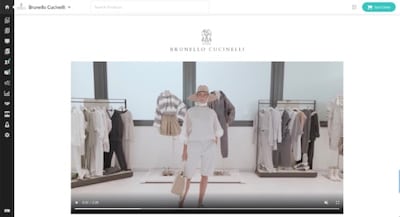
The Business of Fashion
Agenda-setting intelligence, analysis and advice for the global fashion community.

Agenda-setting intelligence, analysis and advice for the global fashion community.

MALIBU, United States — By early October, designer Lisa Marie Fernandez is usually set up in a fancy hotel room in Paris, showing buyers from all over the world her Spring/Summer collection, which has expanded from saccharine-free swimwear to dresses and separates. This year, however, there was no travelling to Paris from her home in California, thanks to Covid-19. Instead, she hosted "showroom" appointments by the pool on her Malibu property, where her fit model slid in and out of garments against a lookbook-worthy backdrop, with the Santa Monica mountains reflected in the water.
“The buyers said we won the award for best location,” said Fernandez, who operates her label independently. “I would never stop going to Paris, but this will also be a good backup.”
Like many other designers, Fernandez is using Zoom, one of the pandemic's big technology winners, to connect with buyers during what is shaping up to be the most critical selling season ever. Others are increasingly relying on digital sales platforms, including Joor, Nuorder and Ordre, which have seen adoption skyrocket over the past six months. Annual sales at Nuorder, which counts Nordstrom, Bloomingdale's and Saks Fifth Avenue as clients, are up 110 percent year over year. At Joor, the longest-standing major player, unique retailer log-ins are up 55 percent since July, while virtual showroom visits are up 437 percent. Gross merchandise value — or the cost of goods sold through the site — is up 50 percent on average since last season, which was also socially distanced. For independent, non-chain retailers, it's up 68 percent.
All the while, many smaller companies in the US and Europe, which were able to stay afloat during the spring and summer with support from their respective governments, have seen much of that assistance disappear. Many major multi-brand retailers, on which many smaller labels depend for distribution, are closing locations, cutting back on orders or shuttering their operations altogether as the outlook for next year remains decidedly uncertain.
ADVERTISEMENT
Digital showrooms are a long overdue upgrade to a largely analog process that has long relied on Excel sheets and, sometimes, pencil and paper. The platforms have allowed retailers to digitise their buying processes, creating efficiencies that save hours of time once devoted to busy work. But no technology transformation is seamless. BoF spoke with store buyers and designers to understand the pros and cons of working with digital showrooms, and how these tools are adapting to a post-Covid world.
Overdue modernisation, but a lack of standardisation.
Walking into a typical pre-Covid buying appointment could be a bit of a shock for those used to doing business digitally. Picture reams of paper, illustrated with technical apparel patterns. Buyers often checked off what they like with a pencil, and those orders were then fed into a brand’s own inventory management system manually.
Digital showrooms have helped to automate this process, allowing buyers to place orders on an iPad, which then hook into whichever programme the brand uses to track its goods. These platforms also allow both buyers and brands to take notes digitally. Now, both sides are less likely to make clerical errors.
Most users appreciate how easy the platforms are to navigate, and how they help retailers evaluate a greater breadth of product than at in-person appointments, where the focus is often on showpieces.
<strong>When I first started this store, I think 70 percent of my time was just entering SKU numbers into a spreadsheet.</strong>

A video on Brunello Cucinelli's virtual showroom | Photo: Nuorder
These platforms also support trade shows, which have been forced to go virtual. Joor hosted 16 trade shows on its platform featuring more than 1,600 brands, with 119,000 retailers logging on.
Nuorder partnered with Milan Fashion Week, the Council of Fashion Designers of America during New York Fashion week, and Informa Markets, the trade show group that owns Coterie, Magic and Micam Americas.
ADVERTISEMENT
During the first 30 days of Informa's group trade show, which launched September 1 online, there were 55,000 connections made between brands and retailers, showcasing 1,100 brands. Close to 20,000 retailers from more than 78 countries logged on.
However, like any new technology, the multiple players in the space are offering similar services but creating a lack of standardisation across the industry. And it’s unlikely that there will be a winner that takes all any time soon. Fashion is an incredibly fragmented business, with businesses picking and choosing technology to fit their needs. Not only are brands and retailers using different platforms, but they’re using them in different ways. It can sometimes create extra work, mitigating time saved.
For instance, many brands settle on collection prices right at the last minute, which means they might have to update their numbers several times before an actual buying appointment takes place. And if a brand and retailer are not on the same platform, any shared notes or information might have to be input twice.
With retailers increasingly cancelling orders at the last minute, digital showrooms have made it easier for brands to tell stores looking for new goods about their excess inventory. Many retailers use these platforms — which are designed to feed into hundreds of different types of enterprise resource planning (ERP) software — to manage inventory across multiple locations.
But not everyone is working this way. In July during the Resort market season, Monse Chief Executive Renee Prince Fillip decided instead to create a password-protected section on the New York-based ready-to-wear label’s e-commerce site where buyers could place their orders. She only uses a digital showroom if a retailer says she must.
"I did look into it a year or so ago, to see if it made sense for us to put our inventory out there," she said. In the end, she decided that retailers could garner most of the same information by simply perusing Monse's e-commerce site, where any in-season inventory owned by the brand is available to purchase. While mid-priced contemporary labels with larger unit runs may benefit from such a service, "I don't know that it makes a lot of sense for our price point," she added.
Fillip, who was a buyer at Neiman Marcus before moving to the brand side, understands the appeal of these platforms to retailers. But for a start-up, they can feel like a time-suck. “It’s a glorified line sheet,” she said. “When we’re at half-capacity, it just makes more work for us.”
Increased visibility, but fear of copycats.
ADVERTISEMENT
At this point in the pandemic, digital showrooms often offer buyers their only opportunity to study product details. Technology like Ordre's 360-degree imaging — also available via the Joor app — can help aid in the process. But even without the extra bells and whistles, digital showrooms do a good job of displaying products, and facilitating an easy conversation between the buyer and the brand. (Nuorder Co-Chief Executive Olivia Skuza calls it "collaborative" buying.)
That said, bringing added visibility to your collection is not always advantageous. Some brands are concerned about product images leaking and landing in the inboxes of fast-fashion copycats. One way to prevent this is by limiting who is able to look at your linesheet, but some designers feel that it is still not as secure as a buyer coming to see the collection in a physical showroom where photography is forbidden.
Both Nuorder and Joor say that their technology allows brands to only see what they want certain retailers to see, down to the specific style and colour. "It's as rock solid as you make it," said Joor Chief Executive Kristin Savilia, noting that while Joor facilitated 1.8 million new retailer-brand connections during the trade show season, 2.3 million were requested.
Cost of doing business — or just costly?
For New York-based jewellery brand Lizzie Fortunato, paying for Joor has been money well spent. “For the time it saves, it’s worth it,” said Chief Executive Kathryn Fortunato. “We pretty much chalk it up to the cost of doing business.” But for others, these platforms are just plain costly.
<strong>They're not currently geared to the abundance of small and mid-sized brands out there.</strong>
The cost for digital showrooms varies, depending on the scale of the brand or retailer. Some brands have been able to negotiate pandemic-era pricing as low as $5,000 a year, while others pay $10,000 or more. (Nuorder currently offers a basic service, simply for uploading line sheets, for free.) Big-box retailers, which sometimes have hundreds of employees using the platform, pay more than six figures annually. Whether or not that sounds reasonable depends on a company's financial health. This season, while forgoing physical showrooms undoubtedly lowers overall costs, there are the additional expenses of sending out fabric swatches and other physical accoutrements to make the buying experience feel more tactile.

A Joor product page | Photo: Courtesy
“They’re not currently geared to the abundance of small and mid-sized brands out there,” said Shan Reddy, a New York-based adviser to independent labels. “The pricing just doesn’t work. Why would I want to knock another 3 percent [out of my profit margin] when I can do this for free through Quickbooks?”
A worthy solution, but not the only solution.
Due to Covid-19, the fashion industry has more or less stayed off airplanes this season. But while technology platforms have made it possible to continue doing business — and challenged both brands and retailers to re-examine their travel budgets — many buyers fundamentally still want to touch and feel garments. And they want to catch up, and gossip, with their fashion comrades.
And the platforms seem to understand that. “We’ll see the move to digital be permanent, but I don’t see it as a be-all, end-all,” said Nuorder Co-Chief Executive Heath Wells.
This makes a hybrid approach a likely strategy for future seasons.
"This industry is based on friendships," said Emilie Rubinfeld, President of Carolina Herrera. "We for sure will sustain those efficiencies… But the doors of our showroom will be open so we can get back to seeing our fashion friends in person."
Related Articles:
[ Now Is the Time for Virtual Showrooms to Shine. Will They?Opens in new window ]
The company has continued to struggle with growing “at scale” and issued a warning in February that revenue may not start increasing again until the fourth quarter.
The British musician will collaborate with the Swiss brand on a collection of training apparel, and will serve as the face of their first collection to be released in August.
Designer brands including Gucci and Anya Hindmarch have been left millions of pounds out of pocket and some customers will not get refunds after the online fashion site collapsed owing more than £210m last month.
Antitrust enforcers said Tapestry’s acquisition of Capri would raise prices on handbags and accessories in the affordable luxury sector, harming consumers.